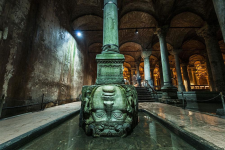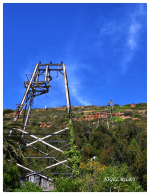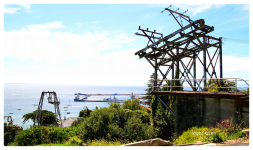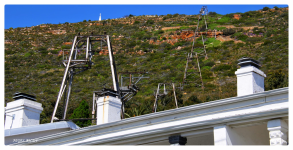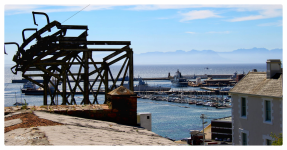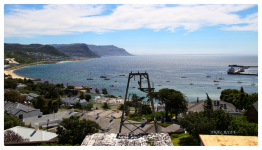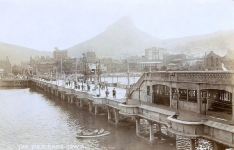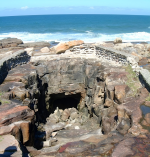
The Grosvenor, a sailing ship belonging to the British East India Company, ran aground in Lambasi Bay, north of Port St. Johns, on 4 August 1782. The ship was on her final voyage back from India, after which she was due to be decommissioned. Upon arrival in South African waters, several days of bad weather made accurate navigational readings very difficult; according to the captain’s calculations, the ship was at least 300 kilometres out to sea, whereas in reality she was perilously close to the shore.
In the early hours of 4 August, the lookout saw strange glowing lights on the horizon which he assumed to be some kind of atmospheric anomaly, similar to the northern lights; what he was actually seeing was fires on the mainland. By the time he realised his mistake it was too late, and the vessel was caught in a powerful current and driven onto a reef.
Of the 150 passengers and crew on board, 125 of them managed to get safely to the shore. The survivors decided to embark on an overland trek to Cape Town, a journey which they had optimistically estimated would take two weeks. This proved to be a gross miscalculation, however, and with virtually no provisions to survive the 2000-kilometre walk, the journey became one of the Wild Coast’s grimmest tales. The hardships of the trip took a heavy toll, and women and children, as well as the elderly, weak and sick, were abandoned as they fell behind. After more than three months of walking, only a handful of survivors reached the border of the Cape Colony. Some of the stragglers were reputedly integrated into local tribes, but the majority perished along the way.
The legend of the Grosvenor rests on a belief that the ship was laden with a king’s ransom in diamonds, rubies, silver, and gold. It is also said that the priceless gem-studded golden “Peacock Throne” of the Mughal emperor Shah Jahan (builder of the Taj Mahal) was on board the vessel during her last fateful voyage.
Over the years, attempts to retrieve these fabulous treasures from the sunken ship have ranged from the bizarre to the ridiculous. The first person to attempt a salvage of the Grosvenor was Sidney Turner, a trader from Port St. Johns. In the 1880’s, he blasted the reef with dynamite and recovered some 800 coins, although this was not nearly the reward that he was hoping for. In reality, Turner probably only managed to destroy what was left of the wreck.
In 1921, the Grosvenor Bullion Syndicate began another attempt to retrieve the alleged treasure, which they estimated to be worth over a million pounds. They set about digging an undersea tunnel from the rocky shore to where the wreck was supposed to lie. Once under the wreck, the idea was to breach the tunnel, allowing what was left in the ship to collapse into the diggings, from where the artefacts could be winched out. The tunnel flooded long before it even reached the wreck site, and the effort was abandoned.
Subsequent salvage attempts included the use of steam-driven cranes, heavy-duty chains to comb the seabed, another tunnel, and numerous dive expeditions. Someone even came up with an overly ambitious plan to enclose the entire bay with a 400-metre breakwater in order to drain it. None of these attempts or ideas ever yielded any significant finds, and the Grosvenor continues to guard her secrets until the present day.
